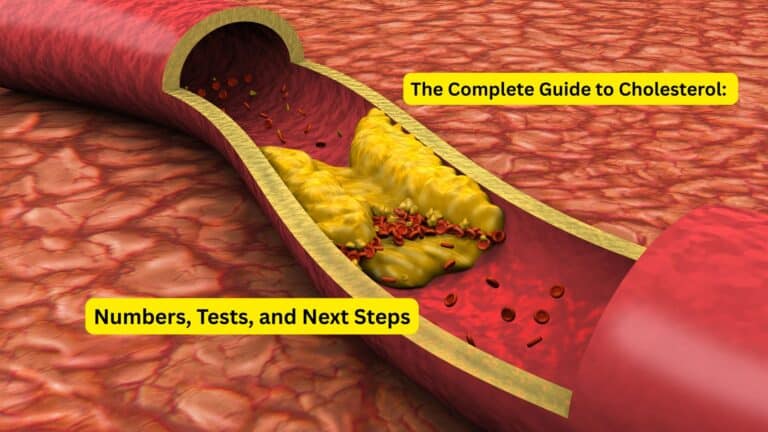Energy levels naturally fluctuate throughout the human lifespan, reflecting complex interactions between biological development, hormonal changes, and lifestyle factors. From the rapid growth phases of adolescence to the physiological changes of older adulthood, understanding these patterns helps distinguish between normal age-related fatigue and concerning health issues. Recognizing when energy changes warrant medical evaluation can lead to early intervention and improved quality of life across all life stages.
Energy in Adolescence and Young Adulthood
The teenage years and early twenties present unique energy challenges driven by rapid physical development and significant lifestyle changes. This period combines the highest metabolic demands of growth with often chaotic sleep patterns and increasing social and academic pressures.
Growth and Hormonal Influences
During adolescence, the body channels enormous energy into physical development, with growth spurts requiring substantial nutritional and metabolic resources. Hormonal surges associated with puberty affect sleep patterns, mood regulation, and energy distribution throughout the day. The rapid brain development occurring during these years also demands significant energy, contributing to the fatigue many teenagers experience.
Young adults often maintain relatively high energy levels due to peak physical conditioning and robust hormonal function. However, this life stage introduces new stressors including college demands, career establishment, and relationship development that can impact energy patterns significantly.
Circadian Rhythm Shifts
Teenagers experience a natural shift in their circadian rhythms, leading to later bedtimes and wake times—a phenomenon known as sleep phase delay. This biological change often conflicts with early school start times, creating chronic sleep deprivation that manifests as persistent daytime fatigue. Poor sleep hygiene habits established during these years can create lasting patterns that affect energy levels into adulthood.
The irregular schedules common in young adulthood, including late-night social activities, shift work, or intensive study sessions, further disrupt natural circadian rhythms. These disruptions can create fatigue patterns that extend beyond the immediate sleep debt, affecting cognitive performance and physical energy.
Energy in Midlife
The middle years, roughly spanning ages 30 to 50, often represent a period of peak responsibility and stress that significantly impacts energy levels. Work demands, parenting responsibilities, and caregiving for aging parents create a complex web of obligations that can lead to chronic fatigue.
Lifestyle and Stress Factors
Midlife adults frequently experience fatigue related to work-life balance challenges rather than biological aging. The combination of sedentary jobs, limited exercise time, poor dietary choices due to time constraints, and chronic stress creates a perfect storm for energy depletion. Many individuals in this age group report feeling constantly tired despite not having obvious medical conditions.
The demands of parenting young children particularly impact energy levels, with sleep interruption and constant vigilance required for child safety and development. Parents often experience years of fragmented sleep and high stress levels that can create persistent fatigue patterns.
Early Hormonal Changes
Subtle hormonal shifts begin during midlife, even before obvious signs of menopause or andropause appear. Women may experience early perimenopausal symptoms including fatigue, mood changes, and sleep disturbances years before menstruation stops. Men similarly experience gradual testosterone decline starting around age 30, which can contribute to reduced energy and stamina.
Thyroid function may also begin to change during midlife, with subclinical hypothyroidism becoming more common. These early hormonal shifts often produce vague symptoms like persistent fatigue that can be easily attributed to lifestyle factors rather than recognized as potential health concerns requiring evaluation.
Energy in Older Adults
The later decades of life bring the most significant changes in energy patterns, with fatigue prevalence rising markedly after age 70. Understanding these changes helps distinguish between normal aging processes and treatable conditions that can substantially improve quality of life.
Multiple Contributing Factors
Older adults face a convergence of factors that contribute to increased fatigue risk. Physical changes including decreased muscle mass, reduced cardiovascular fitness, and slower metabolic processes naturally affect energy levels. The accumulation of chronic health conditions such as diabetes, heart disease, or arthritis creates additional energy demands while limiting physical capacity.
Social factors also play crucial roles in older adult fatigue. Retirement transitions, loss of social connections, bereavement, and reduced sense of purpose can contribute to depression and fatigue. Physical inactivity, poor social support, and insomnia significantly increase fatigue risk in this population.
Medical Complexity
The prevalence of multiple chronic conditions in older adults creates complex interactions that can amplify fatigue. Medications used to treat various conditions may have fatigue as a side effect, and drug interactions can compound these effects. Depression, which affects approximately 20% of older adults, frequently manifests primarily as fatigue rather than obvious mood symptoms.
Sleep disorders become increasingly common with age, including sleep apnea, restless leg syndrome, and changes in sleep architecture that reduce restorative sleep quality. These sleep disturbances contribute significantly to daytime fatigue and reduced cognitive function.
Hormonal and Biological Drivers
Age-related hormonal changes represent one of the most significant biological factors affecting energy levels throughout life. Understanding these changes helps explain why fatigue patterns evolve and when medical evaluation might be beneficial.
Sex Hormone Decline
Estrogen and testosterone levels decline gradually with age, affecting energy metabolism, muscle mass maintenance, and cognitive function. In women, the dramatic hormonal changes of menopause can cause sudden onset fatigue, sleep disturbances, and mood changes that significantly impact daily functioning. The transition period of perimenopause often involves fluctuating hormone levels that create unpredictable energy patterns.
Men experience a more gradual decline in testosterone levels, with approximately 1% annual decrease after age 30. This decline affects muscle mass, bone density, mood regulation, and overall energy levels. Low testosterone can manifest as persistent fatigue, reduced motivation, and decreased physical stamina.
Thyroid Function Changes
Thyroid disorders become increasingly common with age, particularly in women over 60. Both hyperthyroidism and hypothyroidism can cause significant fatigue, though the mechanisms differ. Hypothyroidism slows metabolism and can cause profound exhaustion, while hyperthyroidism may cause fatigue through overstimulation and energy depletion.
Subclinical thyroid dysfunction, where hormone levels are slightly abnormal but not severely impaired, can still cause meaningful fatigue that impacts quality of life. Regular thyroid monitoring becomes increasingly important with age to identify and treat these conditions early.
Muscle Mass and Physical Function
Age-related muscle loss, known as sarcopenia, begins around age 30 and accelerates after age 60. This loss of muscle mass directly impacts physical stamina and can make routine activities more tiring. The reduced muscle mass also affects metabolism, as muscle tissue burns more calories at rest than fat tissue.
Sex differences in aging affect how fatigue develops, with women typically maintaining stronger circadian rhythms than men throughout the aging process. This difference may influence how men and women experience and cope with age-related fatigue.
Circadian Rhythm and Sleep Across the Lifespan
Sleep patterns and circadian rhythms undergo significant changes throughout life, directly impacting energy levels and fatigue patterns. Understanding these changes helps explain why sleep quality often declines with age and contributes to increased daytime fatigue.
Age-Related Sleep Changes
Young adults typically maintain strong, consistent circadian rhythms that support quality sleep and daytime alertness. However, circadian rhythm amplitude decreases significantly with age, leading to less robust sleep-wake cycles and reduced sleep quality.
Older adults often experience earlier bedtimes and wake times, increased sleep fragmentation, and reduced deep sleep phases. These changes result in less restorative sleep despite spending adequate time in bed. The combination of weaker circadian signals and age-related changes in sleep architecture contributes to increased daytime fatigue.
Sleep Disorder Prevalence
Sleep disorders become increasingly common with age, with sleep apnea affecting up to 30% of older adults. Restless leg syndrome, periodic limb movement disorder, and REM sleep behavior disorder also increase in prevalence with age. These conditions disrupt sleep quality and contribute to daytime fatigue and cognitive impairment.
Insomnia, both difficulty falling asleep and maintaining sleep, affects a significant portion of older adults. Insomnia increases fatigue risk 5.5-fold in older adults, making it a crucial factor to address in managing age-related fatigue.
Gender Differences in Sleep Aging
Research indicates that women maintain stronger circadian rhythms than men throughout the aging process, potentially providing some protection against sleep-related fatigue. However, hormonal changes during menopause can disrupt this advantage, leading to significant sleep disturbances during the menopausal transition.
Men may experience more pronounced circadian rhythm weakening with age, contributing to increased vulnerability to sleep disorders and associated fatigue. Understanding these gender differences can help tailor sleep interventions and fatigue management strategies.
Mental Fatigue and Cognitive Decline
Age-related changes in cognitive function and mental fatigue sensitivity represent important factors in understanding energy patterns throughout life. These changes can significantly impact daily functioning and quality of life.
Cognitive Aging Effects
Normal cognitive aging involves subtle changes in processing speed, working memory, and executive function that can contribute to mental fatigue. Tasks that were once effortless may require more mental energy, leading to increased tiredness after cognitive activities.
Older adults may experience altered sensitivity to mental fatigue, which can impact physical function and increase the risk of accidents or mobility issues. This connection between mental and physical fatigue becomes more pronounced with age, making cognitive health an important component of overall energy management.
Depression and Mood Factors
Depression in older adults often manifests primarily as fatigue rather than obvious sadness, making it challenging to recognize and treat. The prevalence of depression increases with age due to factors including social isolation, health problems, loss of independence, and bereavement.
The relationship between depression and fatigue in older adults creates a complex cycle where depression causes fatigue, and persistent fatigue contributes to mood problems. Breaking this cycle requires addressing both the physical and emotional components of fatigue.
Cognitive Reserve and Resilience
Individual differences in cognitive reserve—the brain’s ability to maintain function despite age-related changes—affect how mental fatigue develops. People with higher education levels, more complex occupations, or greater social engagement often maintain better cognitive function and experience less pronounced mental fatigue with age.
Building and maintaining cognitive reserve through lifelong learning, social engagement, and mental challenges can help preserve energy levels and reduce age-related fatigue throughout life.
Statistics That Illustrate the Age-Fatigue Link
Current research provides compelling evidence for the relationship between aging and fatigue, highlighting the importance of understanding and addressing these changes proactively.
Prevalence Data
Fatigue prevalence among adults aged 70+ reaches approximately 38%, representing a dramatic increase compared to younger age groups. This statistic underscores the significant impact of aging on energy levels and the importance of addressing fatigue in older adults.
The risk of experiencing fatigue increases dramatically with age, with adults over 70 facing six times higher risk compared to those in their 60s. This steep increase suggests that the biological and lifestyle factors contributing to fatigue accelerate significantly in the eighth decade of life.
Comorbidity Impact
Research shows that older adults with two or more chronic health conditions face 5.6 times greater fatigue risk than those with none or one condition. This finding highlights the cumulative effect of multiple health issues on energy levels and the importance of comprehensive health management.
The interaction between chronic conditions, medications, and age-related physiological changes creates complex fatigue patterns that require careful evaluation and management. Understanding these interactions helps guide both prevention and treatment strategies.
Sleep and Activity Patterns
Approximately 50% of community-dwelling adults around age 70 report significant fatigue, indicating that fatigue represents a major health concern in this population. The high prevalence suggests that current approaches to preventing and managing age-related fatigue may be inadequate.
Circadian rhythm changes with age correlate directly with activity levels and fatigue severity. Adults with weaker circadian rhythms show lower daily activity levels and report greater fatigue, establishing a clear connection between biological rhythm health and energy levels.
Practical Implications
Understanding age-related energy changes empowers individuals to take proactive steps in maintaining optimal energy levels throughout life. Both lifestyle interventions and appropriate medical evaluation play crucial roles in managing age-related fatigue effectively.
Lifestyle Strategies for Energy Maintenance
Regular physical activity represents one of the most effective interventions for maintaining energy levels throughout life. Exercise helps preserve muscle mass, improves cardiovascular health, supports quality sleep, and enhances mood—all factors that directly impact energy levels. The key is adapting activity types and intensities to individual capabilities and health status.
Sleep hygiene becomes increasingly important with age as natural circadian rhythms weaken. Maintaining consistent sleep schedules, creating optimal sleep environments, limiting screen time before bed, and addressing sleep disorders can significantly improve energy levels across all age groups.
Nutrition plays a crucial role in energy maintenance, with older adults particularly at risk for deficiencies that contribute to fatigue. Adequate protein intake helps preserve muscle mass, while sufficient vitamins and minerals support energy metabolism. Hydration also becomes more critical with age as thirst sensation diminishes.
Diagnostic Testing and Medical Evaluation
When fatigue persists despite lifestyle modifications or significantly impacts daily functioning, medical evaluation and diagnostic testing become essential. Walk-In Lab offers convenient access to comprehensive testing panels that can identify common causes of age-related fatigue without requiring time-consuming doctor visits.
Essential tests for evaluating age-related fatigue include thyroid function panels to assess hormonal balance, comprehensive metabolic panels to evaluate organ function, and complete blood counts to identify anemia or other blood disorders. Hormone testing, including testosterone and estrogen levels, can reveal deficiencies contributing to fatigue.
Vitamin and mineral assessments, particularly vitamin D, B12, and iron levels, help identify nutritional deficiencies that commonly contribute to fatigue in older adults. Inflammatory markers such as C-reactive protein can indicate underlying inflammatory conditions that may cause persistent exhaustion.
Mental Health and Social Support
Addressing mental health concerns becomes increasingly important with age as depression and anxiety can manifest primarily as fatigue. Regular mental health screening and appropriate treatment can dramatically improve energy levels and overall quality of life.
Social engagement and maintaining sense of purpose play crucial roles in preventing age-related fatigue. Communities, families, and healthcare providers should work together to combat social isolation and support meaningful activities that promote physical and mental well-being.
Early recognition of concerning fatigue patterns allows for timely intervention that can prevent progression to more severe conditions. Understanding the difference between normal age-related energy changes and potentially serious health concerns empowers individuals to seek appropriate care when needed.
Frequently Asked Questions
Why do energy levels decline with age?
Energy decline with age results from multiple physiological changes including hormone reduction, decreased muscle mass, altered circadian rhythms, increased chronic health conditions, and changes in sleep quality. These factors interact to reduce overall energy production and increase the body’s energy demands.
How does aging affect sleep and fatigue?
Aging weakens circadian rhythms, leading to poorer sleep quality and increased daytime fatigue. Sleep becomes more fragmented, deep sleep phases decrease, and sleep disorders become more common, all contributing to reduced restorative sleep and increased exhaustion.
Do men and women experience fatigue differently as they age?
Yes, women typically maintain stronger circadian rhythms than men throughout aging, which may provide some protection against sleep-related fatigue. However, hormonal changes during menopause can significantly impact women’s energy levels, while men experience more gradual changes related to testosterone decline.
What lifestyle factors help maintain energy in older age?
Regular physical activity appropriate to individual capabilities, good sleep hygiene, managing chronic health conditions, maintaining strong social connections, and proper nutrition all help preserve energy levels. Mental health care and stress management also play crucial roles.
When should fatigue in older adults be medically evaluated?
Persistent or worsening fatigue that doesn’t improve with rest, significantly impacts daily activities, or is accompanied by other symptoms like unexplained weight loss, mood changes, or cognitive decline should prompt medical evaluation. Additionally, fatigue that develops suddenly or represents a significant change from previous energy levels warrants assessment.
Conclusion
Energy levels naturally change throughout life, reflecting the complex interplay of biological aging, hormonal shifts, and lifestyle factors. While some decline in energy is expected with aging, significant or sudden changes in fatigue patterns may indicate underlying health issues that benefit from early recognition and treatment.
Understanding these age-related patterns empowers individuals to distinguish between normal changes and concerning symptoms that require medical attention. Proactive lifestyle management, including regular exercise, quality sleep, proper nutrition, and social engagement, can help maintain optimal energy levels throughout life.
When fatigue persists or significantly impacts daily functioning, diagnostic testing provides valuable insights into potential underlying causes. Order your comprehensive age-related fatigue evaluation today with Walk-In Lab to uncover treatable causes of persistent exhaustion and take proactive steps toward maintaining energy and vitality throughout your life.






